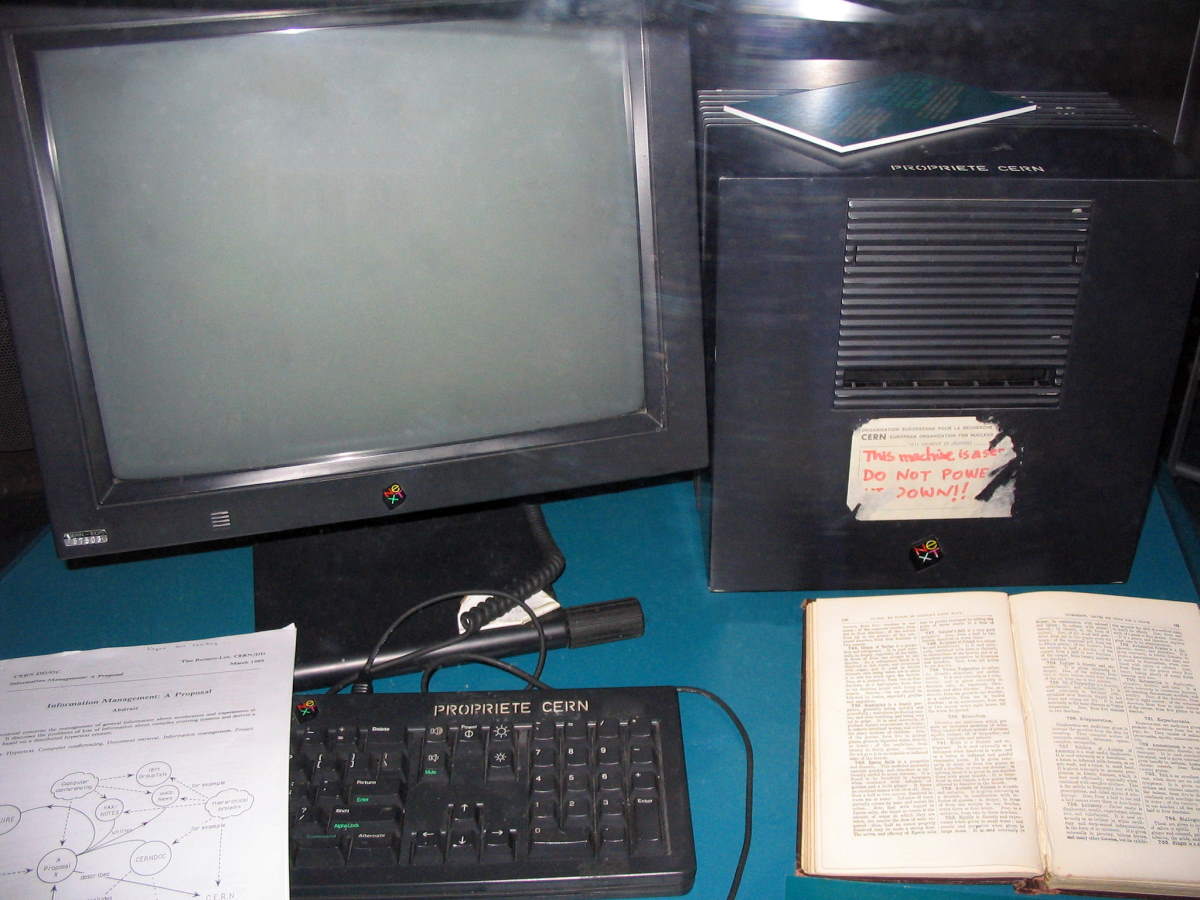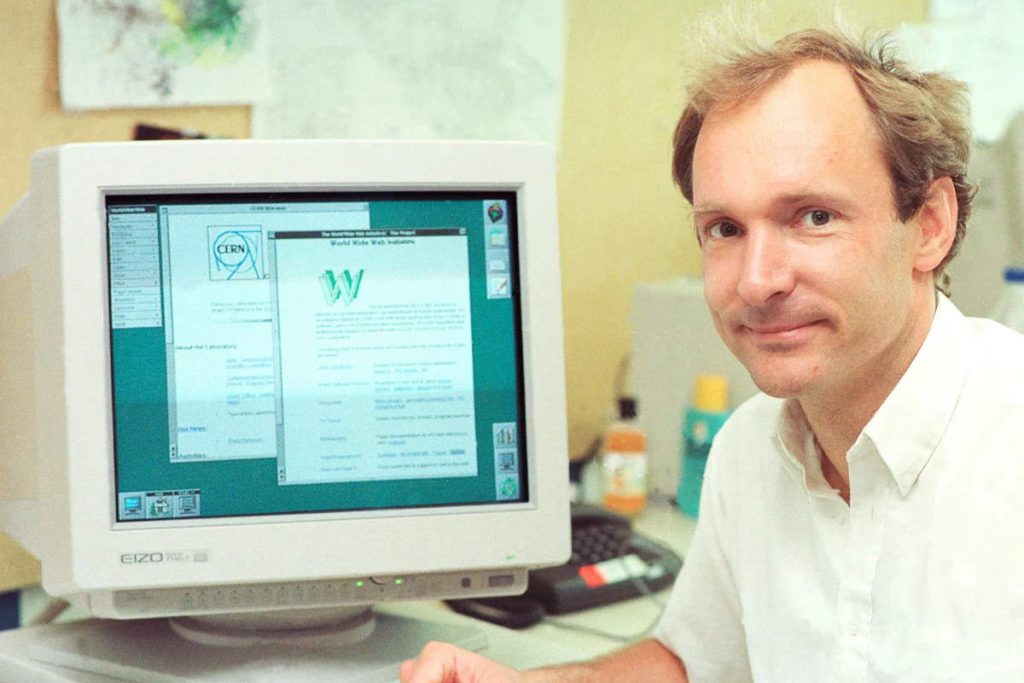On May 17, 1991, the English computer scientist Tim Berners-Lee set up the first web server in history. This event marks the public release of the World Wide Web. Tim Berners-Lee is known as the inventor of the World Wide Web.
Today’s (May 17) story of what happened this day in Science, Technology, Astronomy, and Space Exploration history.
World Wide Web
Tim Berners-Lee invented the World Wide Web in 1989 while working at European Organization for Nuclear Research, simply known as CERN (he made the first proposal for a World Wide Web on March 12, 1989).
In 1990, he developed the foundations for the Web: HTTP, HTML, the WorldWideWeb browser, a server, and the first website in order to manage documentation.
On May 17, 1991, Tim Berners-Lee set up the world’s first web server: a NeXTcube is a high-end workstation computer developed, manufactured, and sold by NeXT from 1990 until 1993.
This machine is a server. DO NOT POWER IT DOWN!
Tim Berners-Lee, a sticky note on the first web server

The image above is the world’s first web server. It is shown as displayed in 2005 at Microcosm, the public science museum at CERN where Berners-Lee was working in 1991 when he invented the World Wide Web.
Some interesting details in the photo:
Information Management: A Proposal. Abstract
The document resting on the keyboard is a copy of “CERN DD/OC March 1989 Information Management: A Proposal. Abstract” which was Berners-Lee’s original proposal for the World Wide Web. (Further text visible: “…distributed hypertext systems, Hypertext, computer conferencing, document retrieval, information management. Project, IBM Group talk, VAX/Notes, CERNDOC, UUCP News, Hierarchical systems”.)
This machine is a server. DO NOT POWER IT DOWN!!
The partly peeled-off label on the cube itself has the following text: “This machine is a server. DO NOT POWER IT DOWN!!” The labels on top of the server and on the keyboard read “PROPRIETE CERN” (French for “Cern property”).
Just below the keyboard (not shown) is a label that reads: “At the end of the 80s, Tim Berners-Lee (TBL) invented the World Wide Web using this Next computer as the first Web server.”
Enquire Within upon Everything
The book is the encyclopedia in many parts of Robert Kemp Philp, ed.: “Enquire Within upon Everything”, London 1856 and later editions, which Berners-Lee describes on page one of his book “Weaving the Web. The Original Design and Ultimate Destiny of the World Wide Web as “a musty old book of Victorian advice I noticed as a child in my parents’ house outside London”. (Text that is almost legible in the high-resolution picture: 750. Diuretics, 756. Diaphoretics, 761. Expectorants, 765. Ginger).
Enquire Within upon Everything is a how-to book, akin to a short encyclopedia for domestic life, first published in 1856 by Houlston and Sons of Paternoster Square in London. The editor was the English journalist and author Robert Kemp Philp (1819-1882).
Text at the beginning of Tim Berners-Lee: Weaving the Web, Chapter 1 Enquire Within upon Everything:
Berners-Lee in Weaving the World Wide Web:
“When I first began tinkering with a software program that eventually gave rise to the idea of the World Wide Web, I named it Enquire, short for Enquire Within upon Everything, a musty old book of Victorian advice I noticed as a child in my parents’ house outside London. With its title suggestive of magic, the book served as a portal to a world of information, everything from how to remove clothing stains to tips on investing money. Not a perfect analogy for the Web, but a primitive starting point”.
“What that first bit of Enquire code led me to was something much larger, a vision encompassing the decentralized, organic growth of ideas, technology, and society. The vision I have for the Web is about anything being potentially connected with anything…”
Sources
- World Wide Web on Wikipedia
- NeXTcube on Wikipedia
- Tim Berners-Lee on Wikipedia
- The Largest Elephant Ever Recorded : Henry - October 13, 2024
- All Moons in Our Solar System [2024 Update] - September 17, 2024
- Budget of NASA, Year by Year [1980-1989] - June 10, 2024

